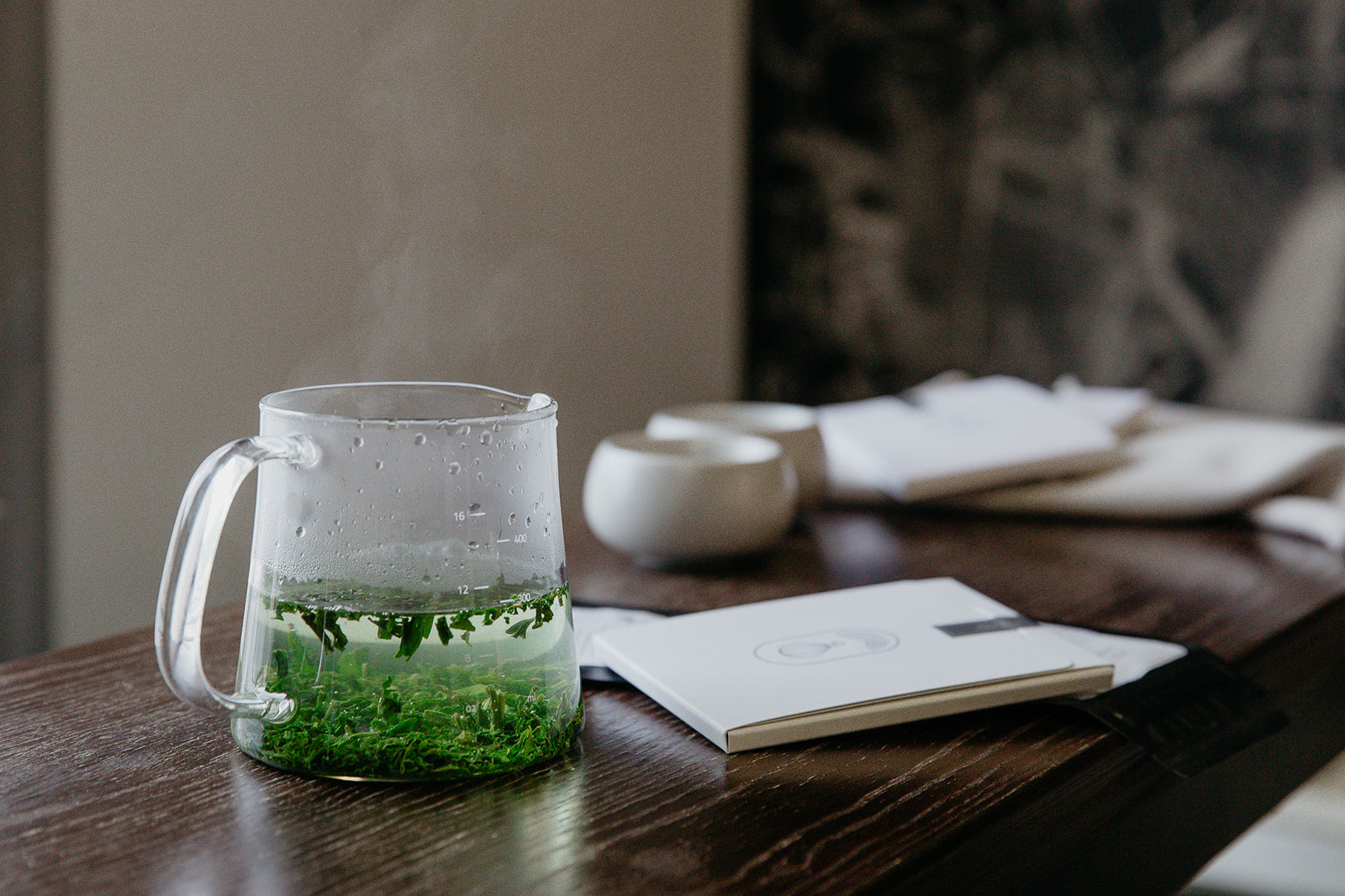Your Cart is Empty
YES, OUR TEA BAGS ARE PLASTIC
A closer look at PLA, and why we use it.
There’s a lot of conversation around tea bags—especially about what they’re made of and whether they're safe. We want to be clear: our tea sachets are made from plastic. Specifically, a bioplastic called PLA (polylactic acid).
Here’s what that actually means—and why we use it.
WHAT IS PLA?
PLA (polylactic acid) is a type of thermoplastic aliphatic polyester made by fermenting plant sugars—usually from corn, sugarcane, or cassava. In basic terms:
- Starches are extracted from plants.
- The Sugars are fermented into lactic acid.
- That lactic acid is polymerized into long molecular chains, creating a plastic resin.
- That resin is spun into fibers, which become the mesh used in tea sachets.
PLA behaves like conventional plastic, but it’s bio-based instead of petroleum-based. It is compostable in industrial facilities, breaking down into water and carbon dioxide under high heat and humidity over time.
Importantly, PLA has been independently approved for food contact use around the world—including certifications from regulatory bodies in Japan, China, the European Union, and the United States. That means it meets strict safety standards when used in food and beverage packaging.
ONE SUPPLIER, SHARED MATERIAL
Almost all PLA tea mesh used globally—including ours—comes from a single supplier in Morocco. That means whether you're drinking tea from Hugo or another brand using PLA sachets, the underlying material is fundamentally the same.
Different brands may test for different things (like BPA or phthalates) and promote different marketing claims. But the core material—the bioplastic fiber used to weave the sachet—is shared.
If one PLA sachet has a specific characteristic, it’s safe to assume others likely do, too.
We believe that kind of supply chain reality should be shared openly—not glossed over.
What is PLA?

PLA (polylactic acid) is a type of thermoplastic aliphatic polyester made by fermenting plant sugars—usually from corn, sugarcane, or cassava. In basic terms:
- Starches are extracted from plants.
- The sugars are fermented into lactic acid.
- That lactic acid is polymerized into long molecular chains, creating a plastic resin.
- That resin is spun into fibers, which become the mesh used in tea sachets.
PLA behaves like conventional plastic, but it’s bio-based instead of petroleum-based. It is compostable in industrial facilities, breaking down into water and carbon dioxide under high heat and humidity over time.
Importantly, PLA has been independently approved for food contact use around the world—including certifications from regulatory bodies in Japan, China, the European Union, and the United States. That means it meets strict safety standards when used in food and beverage packaging.
ONE SUPPLIER, SHARED MATERIAL
Almost all PLA tea mesh used globally—including ours—comes from a single supplier in Morocco. That means whether you're drinking tea from Hugo or another brand using PLA sachets, the underlying material is fundamentally the same.
Different brands may test for different things (like BPA or phthalates) and promote different marketing claims. But the core material—the bioplastic fiber used to weave the sachet—is shared.
If one PLA sachet has a specific characteristic, it’s safe to assume others likely do, too.
We believe that kind of supply chain reality should be shared openly—not glossed over.
WHY WE USE PLA
We chose PLA because it offers the best available balance between performance and responsibility for single-serve tea. Compared to traditional plastics like nylon or PET:
- PLA is plant-based, meaning it’s made from renewable resources—not fossil fuels.
- It does not require fossil fuels to produce.
- It composts under commercial composting conditions.
- It avoids the long-term persistence of petroleum plastics.
It’s not perfect. It’s still plastic. But in the material landscape available today, it’s still the best available option..
WHAT ABOUT MICROPLASTICS?
There’s a lot of marketing language around “microplastic-free” tea bags right now.
Here’s what we know:
- PLA is plastic.
- Whether PLA sachets release microplastics during brewing has not been definitively proven or disproven.
- Claims of "zero microplastics"shoould be treated carefully, especially when the industry shares a common material source.
We aren’t going to promise what we can’t independently verify. Instead, we’ll be clear: our sachets are made of plastic that is safe for food use but still plastic.
THE BEST OPTION: LOOSE LEAF
If you want to avoid plastics entirely, loose leaf is the best way to brew.
No mesh. No polymers. Just tea and water.
Brewing in a Gaiwan or Boli keeps things simple—and gives the tea the space it needs to open up fully.
We’ll keep asking questions. We’ll keep paying attention. And we’ll keep being transparent about what’s in the cup.
If you ever want to talk about sourcing, materials, or anything else—we’re happy to share what we know.

OUR UNABRIDGED ROSTER OF MASTERFUL TEAS & TISANES
Our loose leaf teas come from producers we know and trust—grown in small plots, processed by hand, and selected for clarity and balance. Whether you're brewing a daily cup or exploring something new, this collection offers a direct line to the source.
Shop All TeaSources
Moroccan Sachet Supplier
https://www.teacoffeepackingmaterial.com/product/pla-mesh-neosoilon/
Ethical Consumer - Is there Plastic in my Tea?
https://www.ethicalconsumer.org/food-drink/there-plastic-my-tea
PLA Plastics in Tea Bags - Why They Aren't the Ultimate Solution
https://pickerspocket.com/blogs/news/pla-plastics-in-tea-bags-why-they-arent-the-ultimate-solution?srsltid=AfmBOool5uvkle0ERo4cjraBv7XsBBYxNtr8mqqV1jhgoczyuw8dUZrQ
Science Direct - The release of polylactic acid nanoplastics (PLA-NPLs) from commercial teabags. Obtention, characterization, and hazard effects of true-to-life PLA-NPLs
https://www.sciencedirect.com/science/article/pii/S0304389423011822
What is PLA? (Everything You Need To Know)
https://www.twi-global.com/technical-knowledge/faqs/what-is-pla

